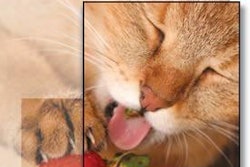
Many factors are increasing demands on petfood producers: changing market conditions, more rigorous product specifications and operating requirements, added regulations and intensified competition. Fortunately, new technologies can improve plant performance by:
- Reducing costs;
- Reducing downtime as a result of longer machine life, longer maintenance intervals and improved operational safety; and
- More easily producing high-quality and safe products.
Many petfood enterprises increasingly recognize that the use of modern equipment improves profits. Victam International 2007 is a good place to learn about new technologies for petfood processing. It will take place in Utrecht, the Netherlands, from May 8-10, 2007 ( www.victam.com ). In conjunction with this year's Victam, Petfood Forum Europe will be held on May 8, 2007.
Reducing energy consumption
An effective means of cost reduction is to lower energy consumption, which also lessens the environmental impact. Big price increases in the last two years and a general fuel shortage suggest high costs can be expected to continue for the energy-intensive petfood plants. In some countries, higher taxation for energy-intensive industries will also impact the bottom line.
Because of relatively low energy costs in past decades, many petfood plants need to catch up with operational investments that can help offset increased energy costs. In particular, modern air-pressure systems, frequency-controlled electric motors and reduced steam production can help reduce energy use. Seemingly small measures should not be overlooked; they add up quickly. An example is the use of energy-saving lamps that can lead to a noticeable reduction in costs.
Greater savings should always be sought with the desired particle size reduction and raw material characteristics in mind. Besides familiar measures for saving thermal energy, new concepts have been developed to recover thermal energy from dryers and coolers. These systems can sometimes be combined with a closed exhaust air circuit with an integrated odor reduction system. Electrical consumption can also be lowered significantly by suitable conveying solutions. The same goes for the selection of the most suitable particle-size reduction or a combination of particle-size reduction systems.
Preventing cross-contamination
A significant trend in petfood processing is just-in-time production in multi-product plants. The increased number of recipes creates logistic and technological challenges in the production process. The frequent product changes necessitated by the variety of formulations increase the risk of carryover of essential micro-ingredients and therefore cross-contamination becomes problematic. Older plants are often unable to meet the greater flexibility and safety demanded for accuracy.
Specific processing line improvements and procedures can significantly reduce cross-contamination. Elevator boots that require minimal cleaning, the substitution of screw conveyors, shorter conveying distances, correct dimensioning of pneumatic conveyor systems and complete-emptying mixers are some important measures that can considerably reduce cross-contamination.
End-of-line ingredient additions
Ingredient additions at the end of the process, by bulk blending or post-extrusion applications, offer several advantages. End-of-line ingredient addition can overcome some of the disadvantages of just-in-time production by minimizing:
- Complex logisticswhich are susceptible to mistakes;
- Increased wear and power demand by frequent starting and stopping of machines; and
- Damage to sensitive additives (e.g. enzymes, probiotics and vitamins).
The range of different application possibilities provides improved accuracy and greater flexibility in production planning.
Hygienic plant designs
Excellent product safety is now a basic requirement of petfood production. Special consideration must be given to eliminating bacteria, pathogenic germs and mold and to preventing contamination and recontamination. Interesting concepts have been created by machine and plant builders specifically for this purpose: applying hygienic design principles at the concept stage of equipment and devices, creating defined treatment conditions and avoiding germ-laden cooling air.
The traceability, demanded by legislation in some countries, for all raw materials coming into a petfood plant and for finished products is clearly simplified by modern information technology systems. These systems also create the transparency in the supply chain required by some legislation.
Reliable sampling
It is highly beneficial to control product quality and safety during processing. A condition for this is reliable sampling procedures in the receiving area, as well as in the production area that guarantees representative samples are taken. Because sampling is the basis for further investigation, for negotiation with trading partners and for traceability, sources of error should be minimized as much as possible.
Petfood plants are increasingly using automatic or semi-automatic sampling equipment in the receiving area and in processing. In addition, a huge number of possibilities exist for obtaining essential information about the composition, structure and moisture content of mixes and single ingredients by quick analysis. Meanwhile, on-line NIR systems are used in petfood plants for controlling the moisture levels and/or for determining essential ingredients.
Preventing dust explosions
In these intensely competitive times, minimizing downtime through the application of modern technology takes on even greater importance. The European Union ATEX Directive (from the French "ATmospheres EXplosibles") aims to prevent potentially explosive concentrations of gas, vapor, mist or dust in the air. Zones as designated by ATEX categories must be followed for devices and protective systems according to the law. Moderate investment can lead to improved operational safety that meets both legal and insurance requirements. Examples include modified aspiration designs, metal separation before critical elevators and applying certain minimum standards for conveyors, sifters and storage.
Improved products
Adding value entails improvements to products' physical characteristics and nutritional value. Detailed targeted improvements are often necessary. Research indicates that vacuum technology can raise product fat content and reduce product abrasion. The result is a new product that can provide competitive advantages.
Modern technology improves efficiency and reduces risk. Whether the investments required are worthwhile can only be determined by weighing the predicted benefits against the costs.
















